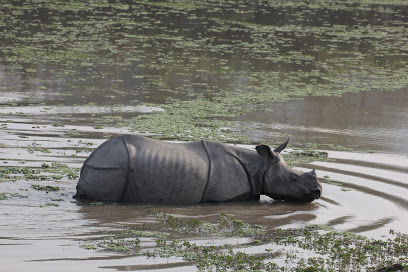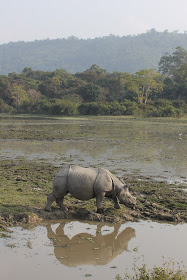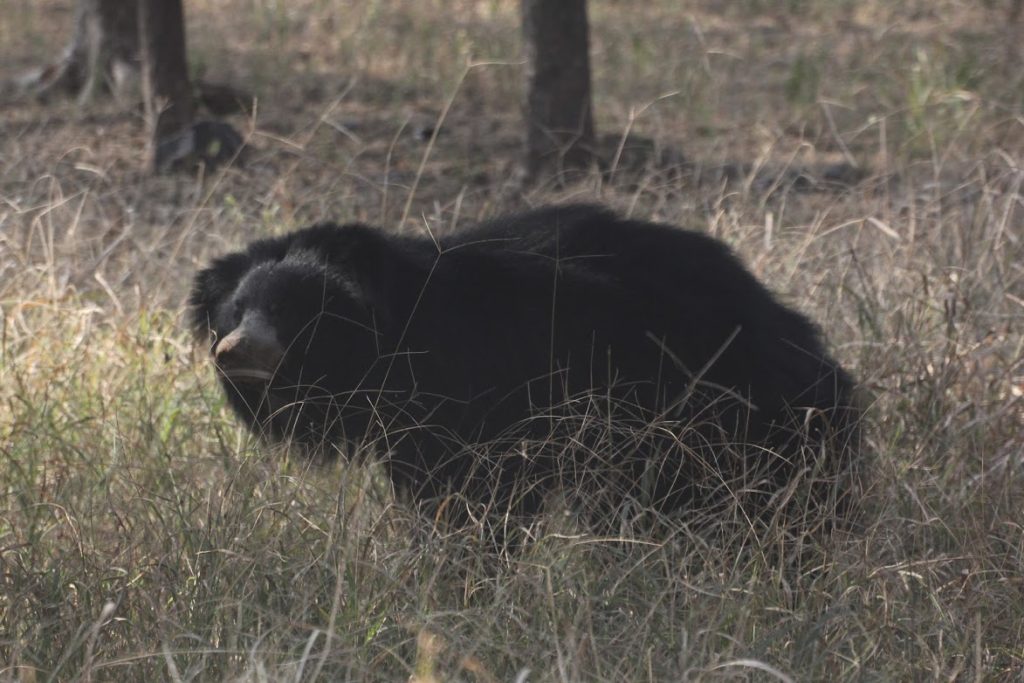We did two safari experiences in India; Ranthambhore National Park for the tigers and Kaziranga National Park for the majestic and ancient looking one-horned rhinos. Even though Ranthambhore is the more famous site our experience in Kaziranga was far superior so we wanted to share why.
Kaziranga National Park
Kaziranga National Park is famous for the Asian one- horned rhino. As well as the rhinos other animals that can be seen within the park include Asian elephants, deers, buffalo, eagles and many rare birds.
Kaziranga National Park is not accessible during the monsoon season from June to August. During this season the nearby Brahmaputra River floods its banks, sending water flowing in the park. The locals therefore have to rebuild the safari routes annually so as a result there are minimal jeep tracks around the park.
We spent four days in Assam with a fantastic guide called Liton. The zones are divided into Central, Western, Eastern and Burhapahar. Each area is unique with some animals popping up in higher concentration than others. Western is famous for the rhinos and eastern for its birds.

Our first drive in the western range was incredible. We got so close to rhinos literally within metres from us. We saw around 5-10% of the world’s rhinos population in the wild, which is a sad indication of how few are left. It felt quite surreal to see so many since they are so close to extinction, although numbers here have stabilised and are recovering. We then visited the eastern range and saw a great hornbill for the first time. We have always loved toucans but seeing a hornbill was pretty cool which it’s colourful beaks and large wings.
The diversity in Kaziranga national park is incredible. When we did the central range we finally saw a tiger 100m away from us. We also saw a variety of monitor lizards, Assamese roof turtles and Asian water buffalo. We also did a drive to the final range, Burhapahar. There we saw several giant squirrels (almost 1m long head to tail!!!), the beautiful golden langur and hundreds of vultures around the carcass of a rhino which had sadly drowned. Tragically 99% of India’s vultures have been killed over the last few years due to a pesticide used in farming which kills them almost instantly.
This place was packed with nature and on our last day we decided to take a trip down the Ganges river to see the Ganges river dolphin. They move so fast so it’s very hard to get photos but was exciting every time we heard one pop it’s head out the river.
What made the experience special was having Liton throughout the whole of the four days. He went above and beyond for us in telling us the stories behind the animals, what the park is doing around conservation and how they’re fighting poachers. He was the guide who took Prince William and Kate around Kaziranga a few years ago so is seen as one of the best around.
Going around India at times felt exhausting with the pollution and endless traffic. In Assam we could actually walk easily around the town and had some of the best food of the trip for only £6 in total for both of us. We loved the atmosphere here and it’s definitely a place we would return. This place is still very off the beaten track, and it showed with vehicles all to ourselves (for the same price as a single seat in a large vehicle in other safaris in India), and the rarity of seeing other vehicles in the park. Saying that, it would be amazing if more people visit in the future, as they need all the money they can to protect the rhinos from poachers and continue to work with local communities to help the conservation effort.
Ranthambore National Park
When you think of India it’s impossible not to think about tigers!
Ranthambore was our first safari of the trip and famous for its tigers. It’s one of the largest national parks in Northern India with very well established tourist infrastructure. It’s not just tigers either as you have the opportunity to spot all kinds of wildlife from sloth bears and leopards to monkeys and wild boars.

The way the safari works is it’s divided into 10 zones: 2-5 having the best chances of seeing a tiger, 1 and 6 still a relatively good chance and visiting 7 and upwards the opportunities are more limited. With all safaris it’s down to luck on what you see. Not only that but the weather conditions and time of year also play a huge part. We found ourselves in the middle of India’s coldest winter for 100 years in Jan-2020 which made it extremely difficult to see a tiger in the wild and we were unsuccessful. That being said, we did see a sloth bear and three leopards which is incredibly rare, especially the sloth bear which was our favourite sighting.
We saw eagles, sloth bears, leopards, many deers, crocodiles, peacocks, flying foxes, wild boar, monkeys and antelopes. On our last day we even did a boat safari to see the gharial crocodiles that are critically endangered with only 1000 left in the world. Sadly large amounts are dying en masse with scientists unable to understand what’s causing it.
If we were to give any advice to the park, it would be to stop focusing on tigers so much. The worse drives were ones where the guides cared about nothing but tigers, so we raced around for three hours not stopping for anything, failed to see tigers and just returned having seen absolutely nothing. Given the cars do not have radios to communicate with others and the bush being so thick, it often felt obvious it would be a lost cause. Unlike Kaziranga, we had a different driver and guide for each drive and they varied wildly in terms of friendliness, skill and communication with guests. For anyone looking to go, it is also important to pick your hotel location wisely. We chose one near the national park so we were always the last to be picked up and so we never got to sit next to each other and were very squashed a lot of the time.
Even though not all of our experience was positive we still had a great time despite not seeing a tiger which means we will be back here one day!
























